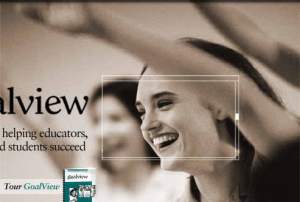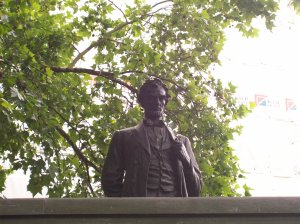Capstone Standard 05 Meta-Reflection: Assessment
Assesses students’ mastery of curriculum and modifies instruction to maximize learning.
Initial reflection during C & I Orientation:
With regard to assessment, I must ensure that I am monitoring progress toward each student’s IEP goals and make any necessary adjustments required to keep them moving toward the general education curriculum–while also addressing the unique needs presented by their disability. Not only does this include measuring progress in the classroom, but also ensuring access to and administration of any alternative assessments to state testing. Examples include: High School Proficiency Exam—Basic (meeting standard at Level 2 versus Level 3), Developmentally Appropriate Proficiency Exam (DAPE), Locally Determined Assessments (such as the Woodcock-Johnson III). Currently, I am not directly responsible for preparation for and administration of the WAAS-Portfolio administration or Collection of Evidence (COE)/
Reflection following the completion of EDU 6613 Standards-based Assessment
Why is assessment an important part of the teaching and learning equation? What have you learned about assessment that you will likely transport to your teaching career?
As I reflect on my experience during this course, I am delighted to share that as a special education teacher, I have learned wonderfully new methods and strategies for involving my students in the assessment process. Working together with both special and general education teachers, we collaborate on the designing and implementation of formative assessments defined by Dell’Olio and Donk as: “Assessment integrated with instruction to provide a feedback loop that allows teaching and learning experiences to be modified as needed. In short, they guide instruction as it is occurring” (p. 464). This ongoing process allow us to keep informed of our students’ progress as we help them prepare for “Summative Assessments: An assessment typically used at the end of a unit of instruction; often and such tools as unit tests, portfolios of student work, final projects and state-mandated assessment instruments”(Dell’Olio, p.417).
I have always believed that self-assessment was vital for my students to engage in, however, in recent years—the topic of “standards-based-assessment” has led me to focus primarily on the idea of helping them to reach standard on the state assessments—in the areas of reading, writing, math, and now Biology—and I have felt that the “self” of my individual students has been somewhat diminished. And yet, regardless of the subject matter my students are working within, my students’ communication skills become an integral factor in their progress, performance, and assessment. For this reason, see great benefit in including the use of Performance Assessments and agree with Stiggins, Arter, & Chappuis as they clarify,
We made the case for reserving performance assessment for those learning targets that really need it: some forms of reasoning, performance skills, and products….but other factors may argue for its use as well: The age of the students (and) reading and writing proficiency. Other assessment methods might not provide accurate information in certain contexts, such as with English Language learners, or students who don’t read or write sufficiently well to answer test questions (p. 195).
Assessment has always been a critical part of the teaching equation in my years in education, yet I have gained a far deeper understanding of its importance to the learning process, as well as the “why” behind both. As authors Stiggins, Arter, & Chappuis, have clarified, the distinction between assessment of learning vs. for learning places the emphasis on helping students answer the three questions, “ ‘Where am I going?’; Where am I now?’; and ‘How can I close the gap?’”…and I am most eager to begin using the authors’ “seven strategies for using a scoring guide as a teaching tool (so that I may) watch as (my) students become competent, confident self-assessors and improve their performance in any subject” (2006, p. 231). Unfortunately, my students are well acquainted with “gaps”—so anything that I can do to increase their ability to understand and participate in the process of “closing the gaps” will build their confidence. I have greatly appreciated learning more about the development of rubrics and effective use of portfolios.
Growth portfolios show progress toward competence on one or more learning targets….(and generally include) the student write[ing] a self-reflection to summarize growth: ‘Here’s how far I’ve come and here’s what I know and can do now that I couldn’t do before’ (Stiggins, Arter, & Chappuis, 2006, p.340).
I am very inspired to begin the new school year with a strategic plan for helping my students to integrate their Individual Education Program (IEP) with their coursework in such a manner that they become effective self-advocates and life-long learners. Truly, this course has been an encouragement to me—both in validating convictions that I’ve come to hold over the years, as well as to provide fresh insights and strategies for assessment implementation.
Artifacts:
Unit Pre-Test Assessment–LaurieUnit Pre-Test Assessment
Unit Test Post Assessment Laurie JamesUnit Test Post Assessment
References:
Arter, J., Chappuis J. & S., & Stiggins, R. (2006). Classroom Assessment for Students Learning. Doing It Right, Using it Well. Boston, MA. Pearson Education, Inc.
Dell’Olio, J. M., Donk, T. (2007). Models of Teaching. Thousand Oaks, CA: Sage.

